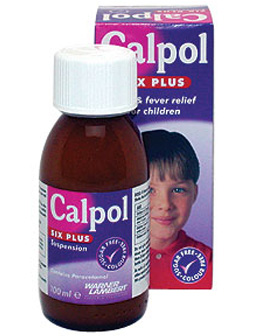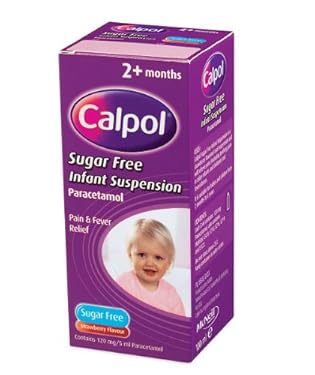Would you consider an article about making up infant formula please? I've read you have to use water hotter than 70 degrees and make the feeds up as required, but a lot of mums I speak to don't do this as it's quite new information and babies have been fine for years without it and over cleaning is just as bad. Who is right?
Sarah
A. Hi Sarah
You are correct that Department of Health guidelines are to use water of at least 70 degrees and discard a bottle after two hours (some sources suggest one if baby has been drinking from it) but there does generally seem to be quite a lot of confusion over the guidelines and whether they are applicable to countries such as the UK & US where water contamination is not an issue. I wanted to answer this question as for mums not breastfeeding, it's important to make the alternatives as safe as possible. I should add at this point that I generally had quite a laissez-faire attitude to sterilisation of things when mine were little - I mean once they were crawling on the floor and chewing things that had been on it, I didn't really see much point ensuring toys were sterilised. I do also think generally that over use in the home of things like antibacterial sprays on every surface, bleaching floors constantly etc carries more risk than the germs they protect from. Breastmilk substitutes however are a little bit different.
Let's start with the most serious risks.
Without a doubt these are are Enterobacter sakazakii and Salmonella. The first is a bit of an interesting one as it is found in the gut of healthy humans (probably as an intermittent guest) as well as in the gut of animals and in the environment. A 2005 study found the prevalence in infant formula varied from 0 to 12% in samples from five different companies. To give more of an idea of frequency, a 2010 study found 9 out of 149 samples were contaminated with E Sakazakii.
When it strikes it can be extremely nasty, and there are strong links with meningitis, septicemia, and necrotizing enterocolitis. In the outbreaks reported 50-70% of the infants who contracted the disease died; for those who survive, severe lasting complications can result in various problems including neurological disorders
The trouble with breastmilk substitutes is that they provide the perfect environment for bacteria to grow and thrive, and in 50-80 % of cases powdered infant formula is both the vehicle and the source (direct or indirect) of E. sakazaki induced illness, whilst no exclusively breastfed infants have to date been reported to have Enterobacter sakazakii infections (WHO).
Because of the high mortality rate, when links with disease were made investigations immediately began as to how to best minimise risks; scientists discovered boiling water at 70 degrees resulted in a more than 4-log reduction in E. sakazakii levels. Furthermore, not leaving the made product to sit around prevented any remaining pathogens from increasing to dangerous levels, a risk that increases further once the enzymes from baby's saliva have entered the mix. This is really important as in the above mentioned study, 8 of the 9 cases of contamination were low and therefore mixing with water of an adequate temperature and using immediately is likely to reduce this risk to a nominal level. However using water that is too cool, then leaving the milk to sit around can very quickly lead to high levels of harmful bacteria.
Although found less frequently in breastmilk substitutes, more people have heard of Salmonella; it can cause anything from mild diarrhoea, vomiting and cramps to the rarer Salmonella bacteremia which can result in septicemia and meningitis. Again using water at 70 degrees minimises risks.
Because formula contamination rarely hits the news unless it's a large "official outbreak" which is less common, many people are under the impression that the risk of formula contamination is negligible; but WHO feel differently:
Is the risk similar in all regions and countries?Another condition heavily linked with incorrect preparation of infant formula is gastroenteritis, often called stomach flu. Symptoms include diarrhoea, sickness and stomach cramps - in people able to consume enough fluids it is generally not serious; however infants and young children are at risk from loss of fluids and may need to be hospitalised for treatment to correct or prevent dehydration.
There have been reported cases of Enterobacter sakazakii infections due to contaminated infant formula in only a few developed countries. It is likely that there is a significant under reporting of infections in all countries. The absence of reports is probably due to a lack of awareness of the problem rather than an absence of illness. In general, the limitations of current surveillance systems in most countries would add to the explanation for the lack of reported cases. Since infant formula is widely used, the presence of Enterobacter sakazakii in infant formula and its potential effects in infants could well be a significant public health problem in most countries.
Sue Battersby, a midwife stated in a 2009 report:
Formula is not sterilised and bacteria can be present. When it is made up or stored incorrectly there is a big risk that it could cause gastroenteritis. "Formula fed babies are five times more likely to be admitted to hospital with gastroenteritis, which in the majority of cases is preventable."It's as usual all about risks rather than certainties - not every baby who drinks milk prepared incorrectly will become ill and nor is meticulously following the guidelines a guarantee baby will remain well; but for the sake of the extra few minutes is it really worth the risk? Of course good hygiene such as sterilisation of bottles and other equipment (domestic dishwashers usually are not hot enough), effective hand washing and careful storage all contribute too . My personal experience is that gastroenteritis is still common at 9-24 months, when many parents relax a little - whilst this may be ok for other items such as toys, things that come in contact with breastmilk substitutes are still prime breeding ground.
For people who say they didn't do it with other children and theirs have always been fine, I always think that given the advancements in what we know about bacteria and how to reduce the risks of it - why ignore this?
Is it hard to do in practice?
Guidelines suggest using water that has been boiled and left for no more than around 30 minutes. For a couple of pounds it's worth buying a thermometer and checking the temperature of your water a couple of times to get a feel for how fast it cools. It is just as important not to add boiling water to the powder as manufacturers suggest this may damage vitamins/nutrients.
If baby has a rough feeding routine, you can then build in cooling time when at home. If going out and about, carrying the powder in a sterilised container, water in a flask and then combining the two when required works - again worth checking the temperature a few times if there's risk it could have cooled. I've heard a lot of mums do this at night too! Another option is to keep cooled boiled water in the fridge, and work out how much needs to be added to the boiling water to get an appropriate temperature. If you decide to use thermal bags for carrying ready made bottles, it's even more important to check temperatures after storage as many mums report large differences in how long milk remains at temperature.
Hope that answers your question - it also neatly dispels the myth infant formula is a handy, convenient alternative!
http://www.dh.gov.uk/prod_consum_dh/groups/dh_digitalassets/documents/digitalasset/dh_084165.pdf













